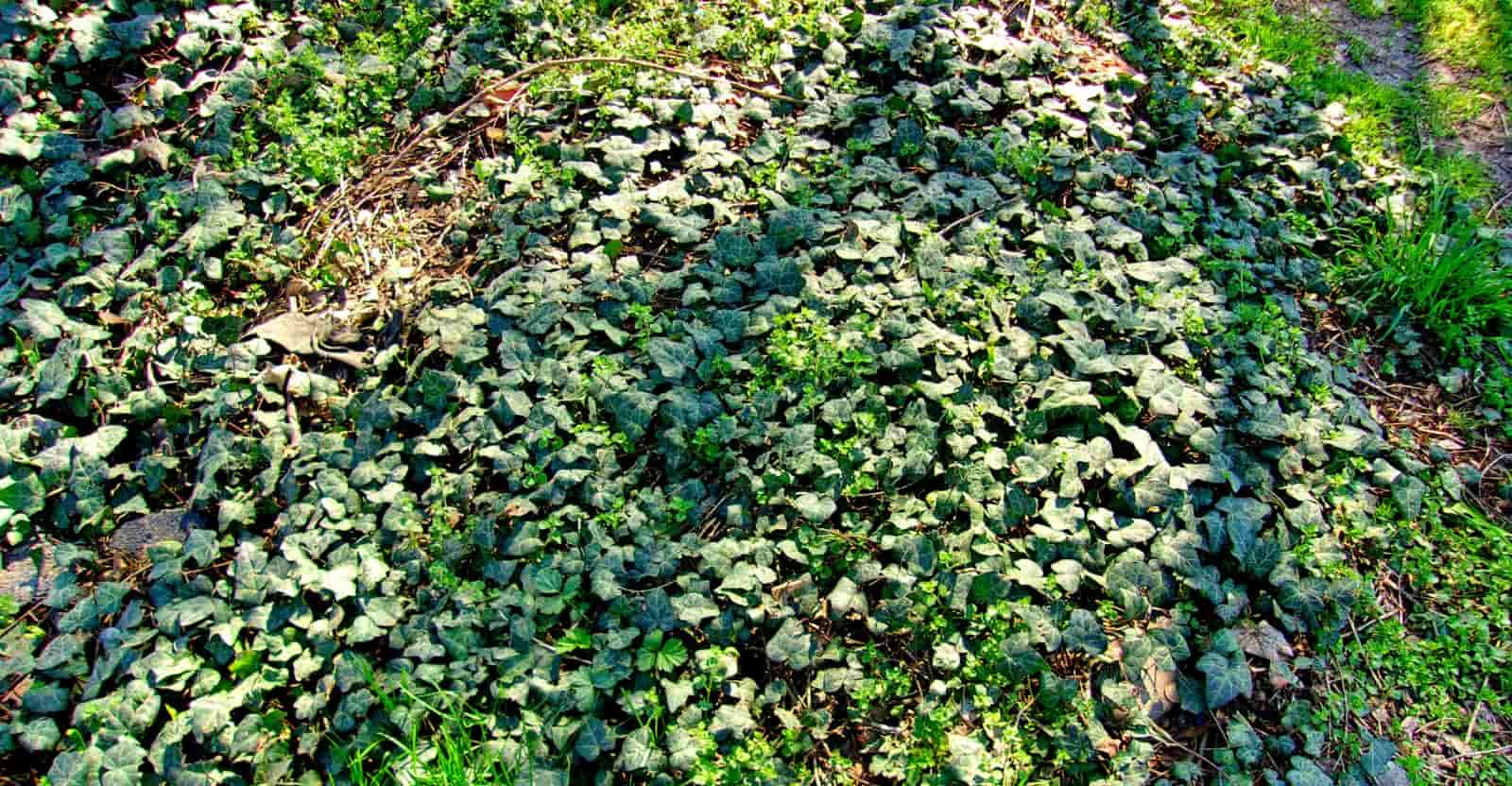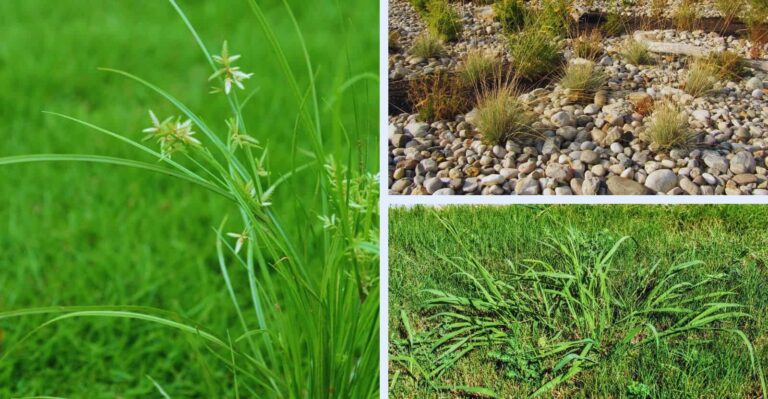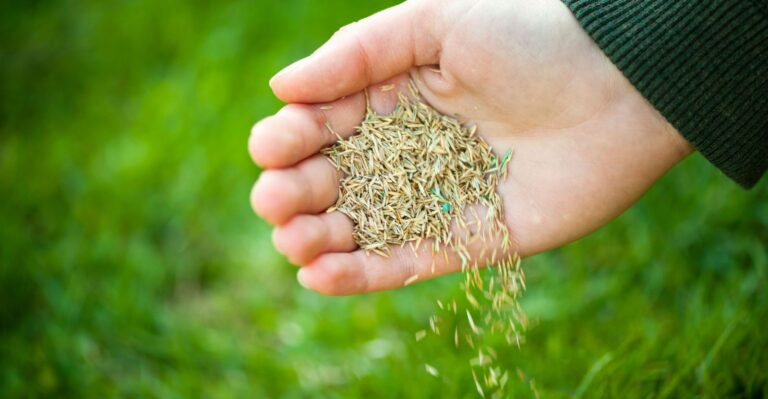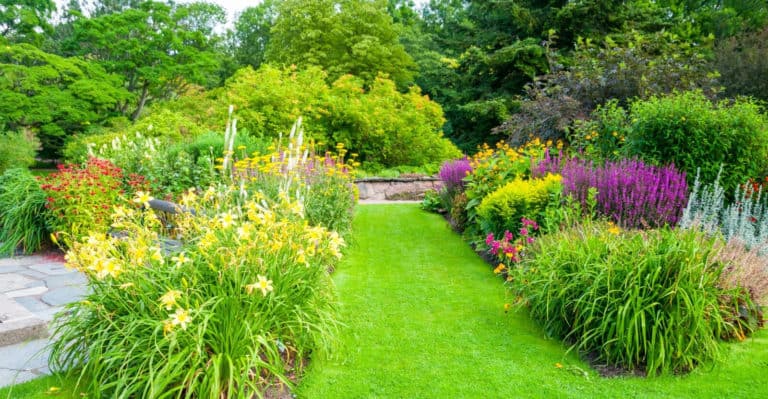Amazon has put together some great Home Gift Deals – save money and get your shopping done at the comfort of your home! Click here to see deals on Amazon
Creeping Charlie is one of the most invasive weeds you have to deal with at some point in your lawn care routine. This article has explained several ways how to get rid of creeping charlie weed without destroying your lawn.
The other important factor is not to let it return to maintain a healthy and good-looking lawn grass. Let’s find out more about it and several techniques to control it.
How can you identify creeping charlie?
Creeping Charlie (Glechoma Hederacea) is also known as Ground Ivy. It has a very distinct appearance as it has multiple-sized round leaves with scalloped edges. It’s a member of the mint family, and sometimes it gives the soft impression of mint.
The underside of leaves has a tinted purple hue with sparse short hairs on it. It spreads both by seed or through its creeping stems. It’s a ground cover weed that grows low to the surface.
It blooms in early spring (March to July) with a delicate and small violet-blue flower that grows up to 1 cm long. The flower grows in clusters of three between the stem and petiole and is two-lipped.
The petals are fused, giving a nice appearance to it and attracting pollinators such as bees. A pollinated flower produces up to four seeds on each node.
Another easy-to-tell sign is it’s a distinct mint-like smell when you crush it. Unlike other weeds with a round stem, the Creeping Charlie has a square vine stem and grows about two feet long.
These highly distinct vines are very noticeable and have several lobes whose midrobes extend from the vine.
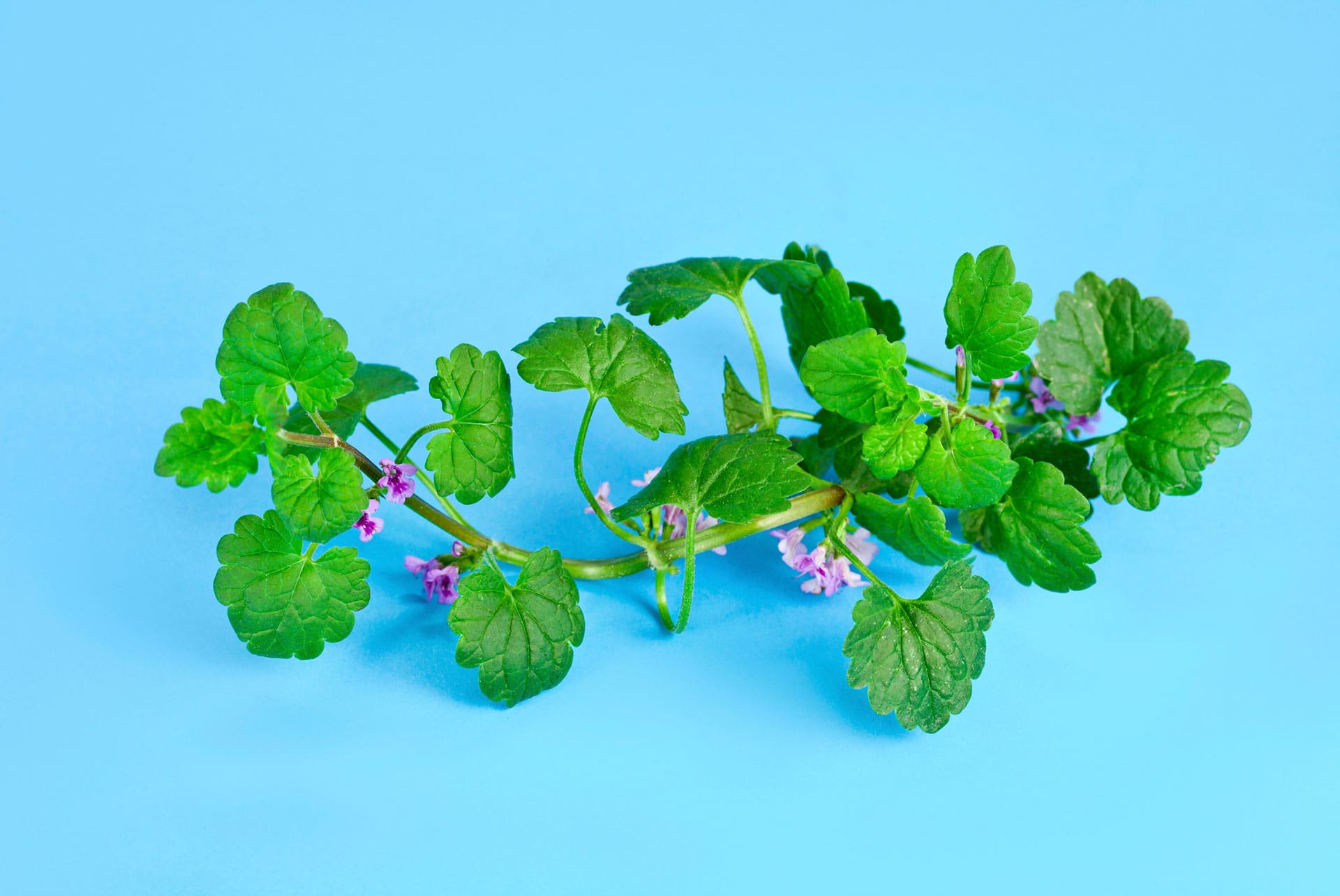
Is Creeping Charlie Bad for Your Lawn?
Creeping Charlie is a highly aggressive perennial that can be a severe threat to your lawn. It’s a fast-growing plant that can sustain itself in harsh ground conditions. If unchecked, it forms a dense mat that can quickly crowd out a healthy lawn and starve other vegetation.
The biggest problem is its aggressive growth rate. In a short time, it can overtake your lawn and any open space it can hold its root. It also looks unsightly to your yard and quickly smothers plants that have yet to bloom while also destroying the grass.
Moreover, the denser and spread-out leaves invite rodents such as rats and moles in your yard that burrow or dig a hole in the yard. It grows in moist soil and shady places such as underneath bush, trees, and shrubs’ dark side.
If you can keep it in check, you can ignore it in a controlled growth environment. But for most gardeners, if you don’t want the hassle of dealing with it later, you should remove it when they’re only a few in your yard.
How to Kill Creeping Charlie but Not Grass
If you notice Creeping Charlie or Ground Ivy growing in nearby yards, chances are you will be dealing with it in yours eventually. Your lawn must have optimal soil health to treat it with a non-selective herbicide to stop it from invading your yard.
If you’re too late in controlling it at an early stage, don’t despair, as there are several ways you can get rid of it from your yard organically.
Here are some of the most popular and effective ways to handle it.
Pull Out Creeping Charlie Manually
If you see it growing in a small area of your lawn, the best and cheapest option is to remove it manually. You can use manual weed remover to help you pull it out from your yard.
It’s best to make some preparation before you get to start pulling it out with your hand. First, you should lightly water your lawn to soften the ground.
It helps you gently pull out the weed with roots intact. You can water your lawn a day before and pull it in the early morning when the ground is still moist.
Don’t forget to put on gardening gloves and use weed pulling tools to help you dig around so you don’t destroy nearby plants or leave roots remaining in the ground.
Always pull it near the bottom of the plant and grab vines when pulling. Ensure that you don’t have any part left around and safely dispose of it in the ground bag.
Look around the ground to find any spread-out nodes. You have to remove these nodes; otherwise, it will give the weed a chance to regrow.
Kill Ground Ivy and Other Weeds with smothering
Like other plants, Ground Ivy needs air, light, and nutrition to grow. If you deprive them of these requirements, these weeds die on their own. This is a very effective way to control weeds without needing to pull them out physically.
So how can you effectively smother a weed?
The best way to smother weeds is by using mulch that covers the soil surface over the weeds. People use different things as mulch such as newspapers, cardboard, tree bark, wood chips, shredded leaves, or even lawn clippings.
If you’re going through this route, be aware that you may be killing other plants and grasses. Use this technique on ground ivy clusters, and ensure that there are no nearby plants that you want to keep.
When you’re mulching, you have to spread it around eight to 12 inches beyond the plant to control spreading vines.
With this technique, you won’t get immediate results. You have to wait a week or two before you see any visible progress. You have to keep the area adequately covered.
You will know this strategy has worked when you see weed to be wilted and brown. The most significant advantage of this method is that it’s effortless to implement and doesn’t demand much attention.
Use landscape fabric to kill weeds organically
Landscape fabric is an excellent way to kill weeds while allowing nearby plants to continue to grow. The fabric allows the water to pass through but blocks the shades and physically prevents the weeds from coming up.
The landscape fabric also prevents organic materials and nutrients from reaching the ground, depriving Ground Ivy of essential nutrients. This is more effective if you have creeping Charlie growing around trees, shrubs, or under decks.
Solarize to get rid of creeping charlie
When you’re putting up a new lawn, you may want to eliminate any viable weed seeds inside the ground. This provides you good weed-free start to your yard.
The solarization technique uses sunlight to heat and burn the plant. This is an effortless and straightforward way to control weed growth in your yard.
You need a transparent plastic sheet that you lay over the weed, and the sun’s heat bakes the weed and its seeds. Another benefit of this technique is that it also kills soil-dwelling pests and diseases.
Follow the steps to solarize weeds effectively:
Step 1: Mow or till the ground to remove any vegetation from the yard (this technique works best on bare ground)
Step 2: Lightly water the soil to dampen the ground as it triggers the weed seeds to start germinating.
Step 3: Lay down the plastic sheet and spread it close to the ground.
Step 4: Hold the plastic sheets with stones or nails to prevent them from blowing around and let them remain stay close to the ground.
Step 5: Seal the plastic edge to retain the heat inside the sheet and increase the ground temperature.
Step 6: Do this when the temperature is high, and there is no chance of rain for a couple of days. You should also avoid tilling the soil after solarization to prevent the surfacing of seeds.

Use an Herbicide to remove Creeping Charlie
The herbicide is a great way to remove weeds effectively. This works best if you have a chronic weed growing problem and have a far wider area to cover. The best time to apply herbicide to your lawn is at the end of fall when weeds start to get ready to go dormant.
Make sure you follow the proper instructions on the herbicide label. But as a general guideline, creeping charlie herbicides need 1.2 to 1.5 oz per 1-gallon solution that covers up to 1,000 square feet. You can fill up the prepared solution in a garden sprayer to spread it evenly on the weeds.
When you’re spraying it in your yard, move back and forth in a uniform motion. It allows you to spread it evenly without over spraying or missing any spots.
Note:
Be careful not to spray herbicides on plants that you want to keep as it may accidentally kill them.
What is a Natural Way to Get Rid of Creeping Charlie?
If you’re trying to find out the natural ways to get rid of Creeping Charlie, there are two popular ways to control it. The first method involves using a physical means to stop the growth and remove it from your lawn.
This plan includes hand pulling or using solarization techniques as an effective and natural way to clear your yard from this broadleaf weed.
Another technique is to use chemicals such as vinegar, borax, or herbicides to stop weed growth. Here we discuss briefly controlling not only creeping Charlie but other weeds in natural ways:
Use borax to get rid of creeping charlie
Borax is a mineral salt that is effective in killing weeds naturally. You have to be a bit careful when using it as it’s toxic to pets such as dogs and cats. You have to ensure that they’re away from the yard after use for some time.
You can mix 10 ounces of borax with 2 gallons of warm water. You can then fill it in a sprayer and sprinkle it over the weed. Be careful not to spray over other plants as it will kill that too.
You may need to apply a couple of applications to see any desired effect. The best time to apply is during the clear sky and if there is no rainfall forecast for a couple of days.
Although borax effectively kills the weeds, you have to be a bit careful using it. Borax remains in the ground for several years that may hinder the growth of other plants.
Encourage healthy lawn growth
A lawn that has healthy and more robust grass can overgrow, smothering the weeds underneath it. You can support the healthy lawn by aerating the grounds and improving the drainage in your yard. Creeping Charlie grows aggressively in a moist and shady area.
You shouldn’t overwater your lawn to reduce the required moisture for weed. Plant shade-tolerant vegetation that can provide natural mulch to smother the weed. You can also trim down overhanging tree branches and shrubs to allow sunlight to reach the ground.
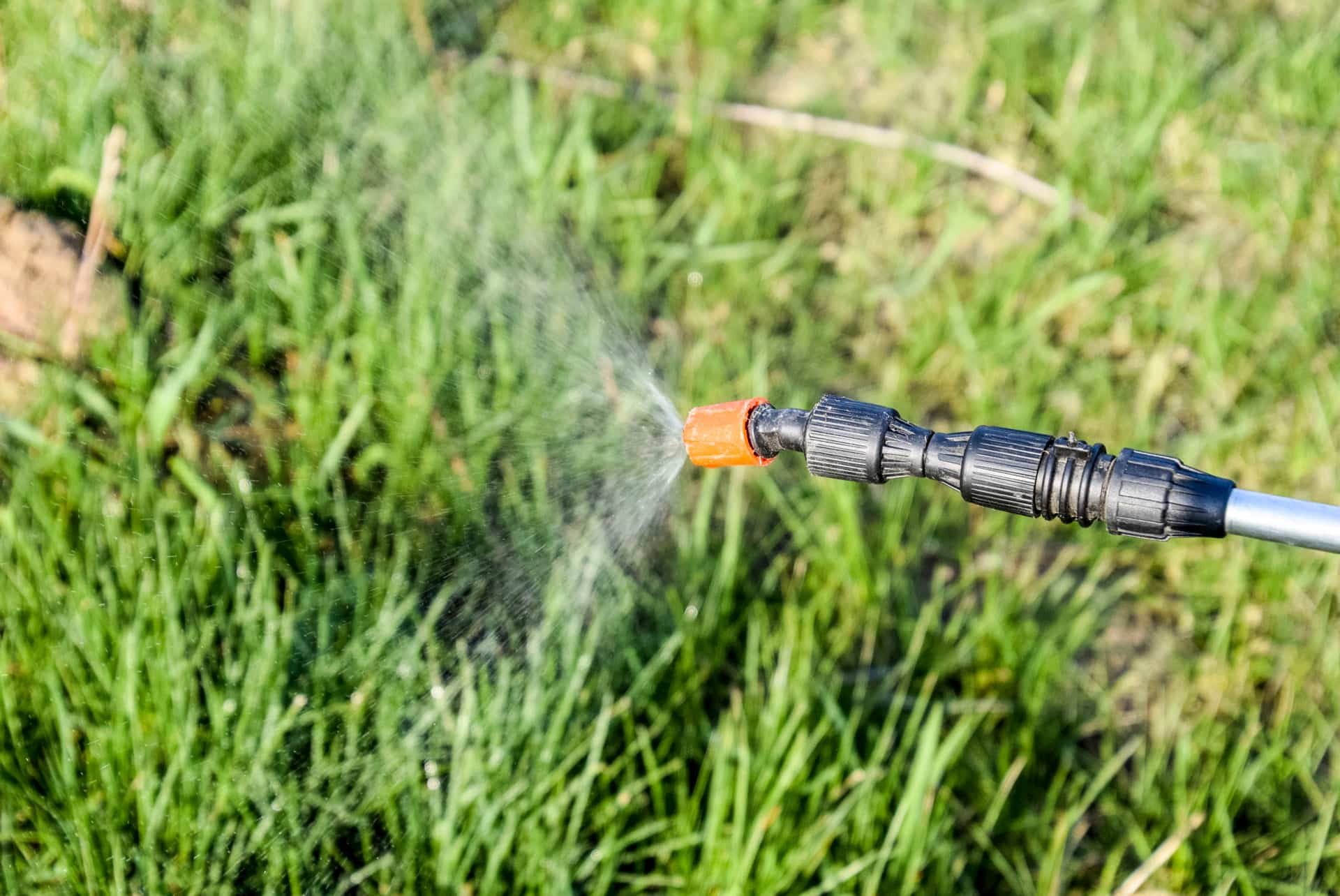
What is the Best Herbicide for Creeping Charlie?
The best herbicide for controlling Creeping Charlie is to use post-emergent broadleaf herbicide. Look for Triclopyr as an active ingredient that is often combined with dicamba, 2,4-D, or MCPP.
The best herbicide product in our experience for controlling Creeping Charlie is to use Ortho Killex Lawn weed control. It’s a highly potent weed killer and comes with a pump sprayer for easy application.
These are highly effective in controlling weeds, but you shouldn’t use them around vegetable or flower gardens. It will kill plants wherever it’s sprayed upon.
But you can use it around areas where there is an extensive infestation. Sometimes, the best solution is to wipe out all the vegetation and start fresh. You can use a broad-spectrum herbicide such as Glyphosate to clear the area from vegetation and start fresh completely.
Will Vinegar Kill Creeping Charlie?
The vinegar effectively controls weeds, but you have to use horticultural grade vinegar and use it correctly.
The home-use vinegar has a low concentration of acetic acid that may be effective on smaller weeds. But it may take up to two weeks of multiple-use to get some results.
Horticulture vinegar is more effective as it contains up to 20 percent acetic acid that is more potent than residential grade vinegar. You can find these commercial grade vinegar with different concentration levels at a gardening store or order them online.
You should look for more than 11 percent acetic acid concentration in the vinegar to have any meaningful effect on killing weeds. We found this 30% Pure Vinegar to be highly effective.
Make sure you wear proper protective gear when applying horticultural grade vinegar. It’s highly corrosive and may cause serious side effects such as skin irritation when it touches the skin or burns eyes.
Prevent kids or pets from playing on the lawn after applying vinegar or other harmful chemicals.
Over to you
Creeping Charlie can be an excellent ground cover plant but is highly invasive and tends to invade turfgrass. The best way to control is prevention, and you should remove it when you see a single plant growing in your yard.
Maintain a healthy lawn by regular mowing schedule. The use of good fertilizer helps improve turf grass’s overall health that can suppress weed growth.
You can follow the above several different ways on how to get rid of creeping charlie and prevent it from regrowing.
Don’t forget to share this post

